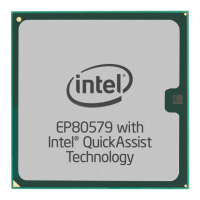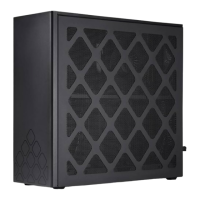Intel
®
EP80579 Integrated Processor Product Line—Controller Area Network (CAN) Interface
Intel
®
EP80579 Integrated Processor Product Line
Platform Design Guide May 2010
234 Order Number: 320068-005US
21.0 Controller Area Network (CAN) Interface
Controller Area Network (CAN) is a serial communication protocol that can efficiently
transfer distributed real-time control commands and small data streams with very high
levels of security. CAN fulfils the communication needs of a wide range of applications
from high-speed networks to low-cost multiplex wiring.
The hardware interface is done via two wire differential pair, transmitting and receiving
in a half duplex mode. The interface is capable of transmitting bit rates of up to 1Mbps
to a maximum transmission line of 30 meters over a typical twisted pair. Networks with
longer transmission lines can be implemented at lower bit rates. Signal delay on the
transmission lines, as well as the number of nodes connected to the network, will have
an impact to the bit rate. As the distance and number of devices increases, the bit rate
will need to be decreased. This is done to overcome the signal delay in the network
topology as the signals move through the twisted pair and experience delays.
The EP80579 supports two CAN controllers with IEEE 1588-2008 Hardware Assist. The
controller requires an external physical interface (CAN driver), therefore this section
provides an example of how to connect an external CAN driver.
As stated earlier, this is a two wire physical interface that requires differential signal
routing guideline for board design.
Figure 144 shows one of the standard connectors used to interface to the outside
world. The CAN protocol does not specify or recommend a mechanical connector,
however, industry uses various connectors with a number of pin definitions. The
example shown in Figure 144 shows a DB9 connector, which is one of the most
common connectors used in industry.
The value of resistor R1 is selected to adjust the rise/fall time of the differential signals;
as the value of R1 is incrementing, so will the rise/fall time. See the datasheet for the
CAN Transceiver for the resistor ratio that affects the proportion of the rise/fall time.

